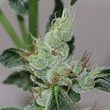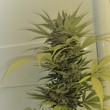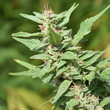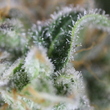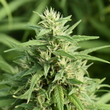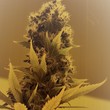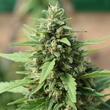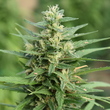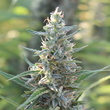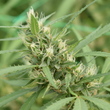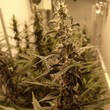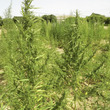Introducción
In June 2015 and July 2016 charcoal rot symptoms were observed in plants of different industrial and medicinal hemp varieties in two different fields located in Southern Spain, the disease incidence was 22% in variety Futura 75 while in Sara and Aida the disease incidence was 25.5% and 37.1%, respectively in Theresa 3.8%, Pilar 3.2%, and finally Juani 2.7%. In both fields, affected plants developed a systemic chlorosis, rapidly wilted, showed necrosis and died with roots necrotic.
Materiales y métodos
Plant samples were collected from both locations and a fungus was consistently isolated from symptomatic stem tissues. After 7 days of incubation at 30 °C in the dark, all isolates produced ovoidal shaped sclerotia. Based on sclerotial morphology, all isolates were identified as Macrophomina phaseolina. The Pathogen identification was confirmed by amplifying and sequencing two genetic regions: TEF-1 region. The Inoculum for pathogenicity tests was produced by growing isolate. After 1 week, 6 plants for each variety (Sara and Pilar, the most and the least susceptible in field trials, respectively) were inoculated by substrate irrigation of each plant. Plants were grown in a growth chamber with a 16-h photoperiod (day/night) at 27ºC and 50/70% relative humidity.
Resultados
Pathogenicity assays were carried out in a randomized complete block design with three blocks of 2 plants each. After 3 months, the mortalities of the inoculated plants were 83.3% and 16.7% for Sara and Pilar, respectively. No mortality was observed in control plants.
Conclusión
Although Pilar had lower mortality rates than the variety Sara, M. phaseolina was reisolated from stems and petioles of 83.3% of the inoculated plants in both varieties. Charcoal rot has been reported on Cannabis sativa L. varieties in Italy, Cyprus, United States of America and Yugoslavia (McPartland et al. 2000). Considering that M. phaseolina has been reported in several crops in Southern Spain and that effective control measures have not yet been found, susceptible hemp varieties are discouraged to be cultivated and suitable crop rotations must be ensured.
Otras publicaciones
Ver más
Ver más
Ver más
Ver más
Ver más
Ver más
Ver más
Ver más
Ver más
Ver más
Ver más
Ver más
Ver más
Ver más
Ver más
Ver más
Ver más
Ver más
Ver más
Ver más
Ver más
Ver más
Ver más
Solicita información
¿Te podemos ser de ayuda? ¿Tienes alguna duda sobre nosotros? Escríbenos y contactaremos contigo cuanto antes.
